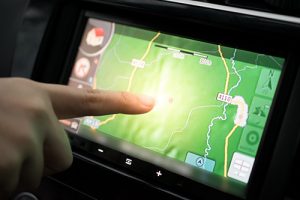 How did we get from Christmas lights with big C9 bulbs that threatened to burn down our tree to extravagant computer controlled LED light displays complete with choreographed music and projections? How did we get from stuffed scarecrows at Halloween to motion detected performances on our doorsteps? Holiday decorations have taken advantage of innovations to make the holidays even more festive or scary, depending on the purpose. This blog post will explore some of the latest in holiday technology that you may need.
How did we get from Christmas lights with big C9 bulbs that threatened to burn down our tree to extravagant computer controlled LED light displays complete with choreographed music and projections? How did we get from stuffed scarecrows at Halloween to motion detected performances on our doorsteps? Holiday decorations have taken advantage of innovations to make the holidays even more festive or scary, depending on the purpose. This blog post will explore some of the latest in holiday technology that you may need.
Retail Display Technology
Large retailers such as Macy’s and Saks Fifth Avenue go to great lengths to create elaborate holiday displays. Now, thanks to Google, you can view a number of retailer holiday displays without leaving your chair. Using StreetView technology, engineers have filmed window displays and formed an interactive experience. This is a new technology developed by Google marketing for retailers that already advertise with Google.
History
The first holiday light display was put up in the late 1800s as a way to replace burning candles on trees. Some of them required generators since electricity was not yet prevalent in some areas. Commercial light sets became available and affordable around 1917. Aluminum trees were introduced in the 1950s and 1960s but could not be used with lights so instead used a rotating color wheel to splash color onto the ornaments. The mini-bulb in the 1970s brought back traditional lighting inside and out and was more energy efficient. While the mini-bulb is still used, LED lighting is making a push into mainstream lighting displays. LED bulbs can now be programmed to change colors and create ever more extravagant light displays. These can be paired with an app to to direct a light display remotely. Who knows if your holiday lights may be hacked in the future?
Festive Laser Lights
Over the last couple of years, laser light projectors have started to augment or replace traditional outdoor holiday lights. These are basically red and green lasers that are projected onto a home or trees. The laser projections are fractured so that you get multiple points of lights. Originally these came as static displays but they are available now as motion lights with options for different patterns in red or green or both. These could replace static LED or mini light strings that have to be installed and taken down every year. It remains to be seen how your neighbors will accept this product, especially if your motion light pattern accidentally shines on their house or car. Also, there are warnings not to shine these up in the air within 10 miles of an airport. New this year are full spectrum white lasers and the option to display more than just red or green. This can extend the light display to Halloween, Fourth of July, or other holidays. The technology continues to be refined and the quality and accuracy of these displays are improving.
Choreographed Light Display
Choreographed light displays have been a big hit on YouTube over the last couple of years. These are lights synchronized with music played either over a loud speaker or through an FM radio signal. The controller can be something as simple as a Raspberry Pi. Judging from videos online, the sophistication and sheer volume of lights used in these displays seems to be growing. Perfect for the competitive techie.
Thoughts
We have come a long way from candles on the Christmas tree to light and music extravaganzas in neighborhoods. Ever bigger, brighter, and more sophisticated. I don’t know where we go from here for the next cool lighting tech but I value your opinion. Let me know what you think.
Kelly Brown is an IT professional and assistant professor of practice for the UO Applied Information Management Master’s Degree Program. He writes about IT and business topics that keep him up at night.





